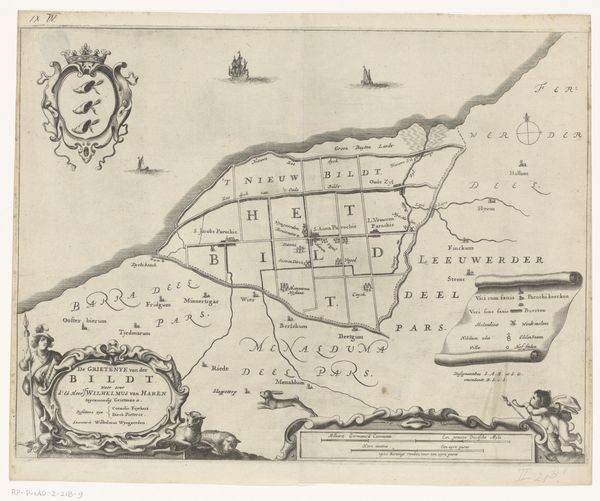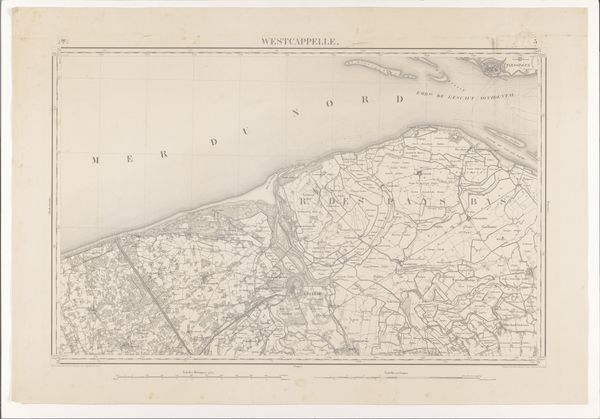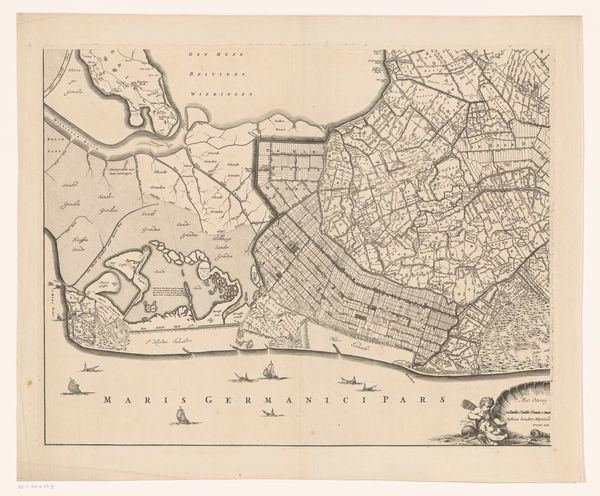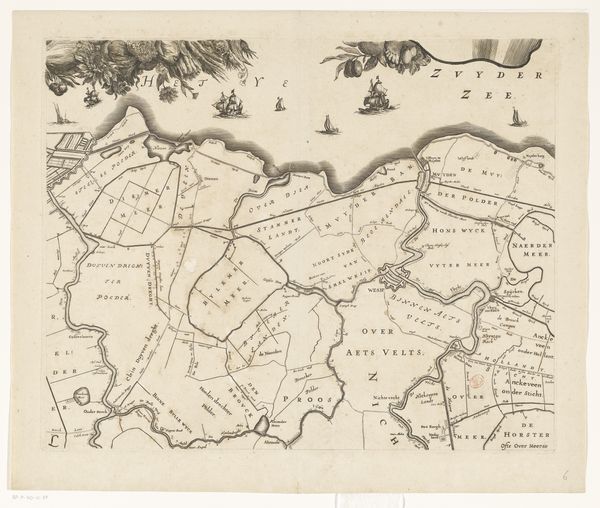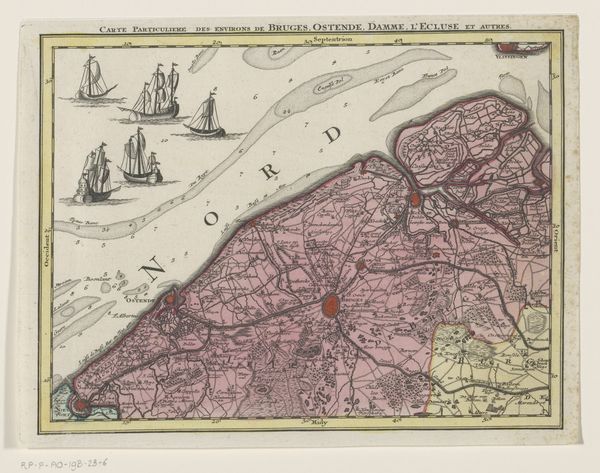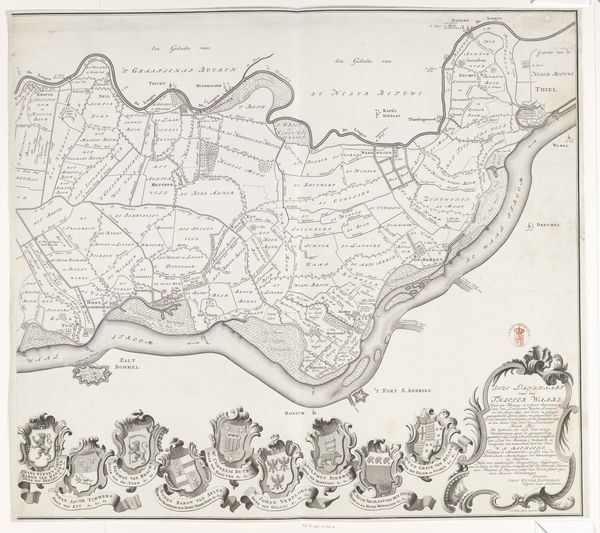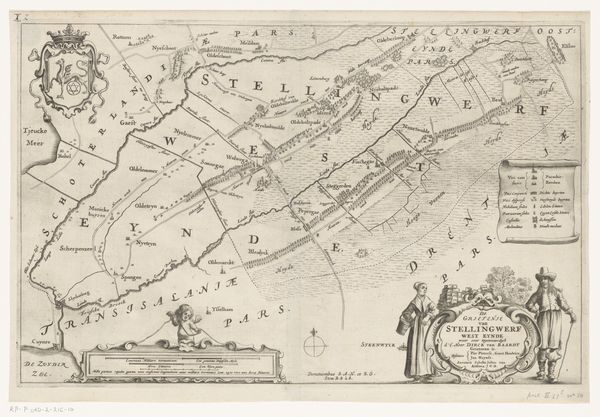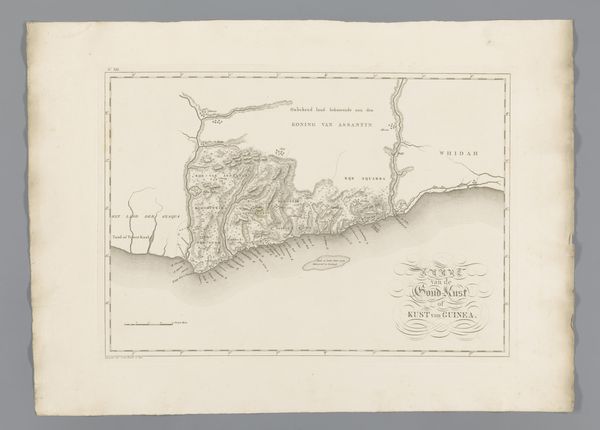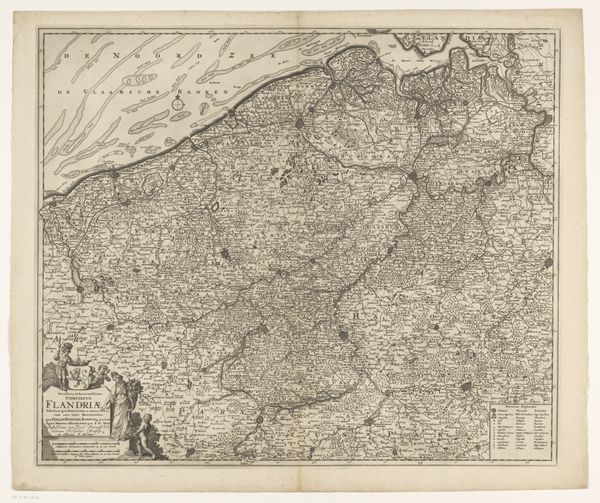
drawing, print, etching, paper, engraving
#
drawing
# print
#
etching
#
landscape
#
etching
#
paper
#
history-painting
#
engraving
Dimensions: height 591 mm, width 932 mm
Copyright: Rijks Museum: Open Domain
Editor: This is an interesting print; it’s called "Kaart van het eiland Goeree-Overflakkee," or "Map of the island Goeree-Overflakkee", made in 1811 by Cornelis van Baarsel. It's an etching on paper. I'm struck by the sheer amount of detail in this map; you can really see how the land was being utilized. What stands out to you? Curator: Immediately, I'm drawn to the methods of production here. Etching, particularly in this era, speaks to a whole industry built on resource extraction. We need to consider where the paper came from – what forests were cleared, what labor was involved in its manufacture? How did the engraver acquire and hone their skills? Were they part of a guild? Editor: That's a perspective I hadn't considered. I was more focused on what the map represents, rather than how it was made. Curator: The 'what' is inextricably linked to the 'how.' This map wasn’t just documentation; it was a commodity. Its purpose may have been practical for administration and navigation, but what about the materials themselves, and how their availability shapes what information gets emphasized? For instance, the fine lines suggest access to quality metal tools. Editor: So, you're suggesting that the quality of the materials and the artisan's skill influenced how detailed and accurate the map could be, impacting its usefulness? Curator: Precisely! And consider its role in land ownership and resource control. Mapping itself is an act of power, staking claim and defining territories for economic exploitation. Also, don't ignore those allegorical figures in the corner—are they representative of something produced on the island? What did those images mean for the person buying the map? Editor: I hadn't thought about the implications of access to resources like paper and skilled labor being linked to exerting power over land! It's a completely different way to look at a historical map. Curator: Exactly! Examining the materials, labor, and consumption connected to an object opens new lines of inquiry that lead us away from aesthetics and closer to social understanding.
Comments
No comments
Be the first to comment and join the conversation on the ultimate creative platform.
